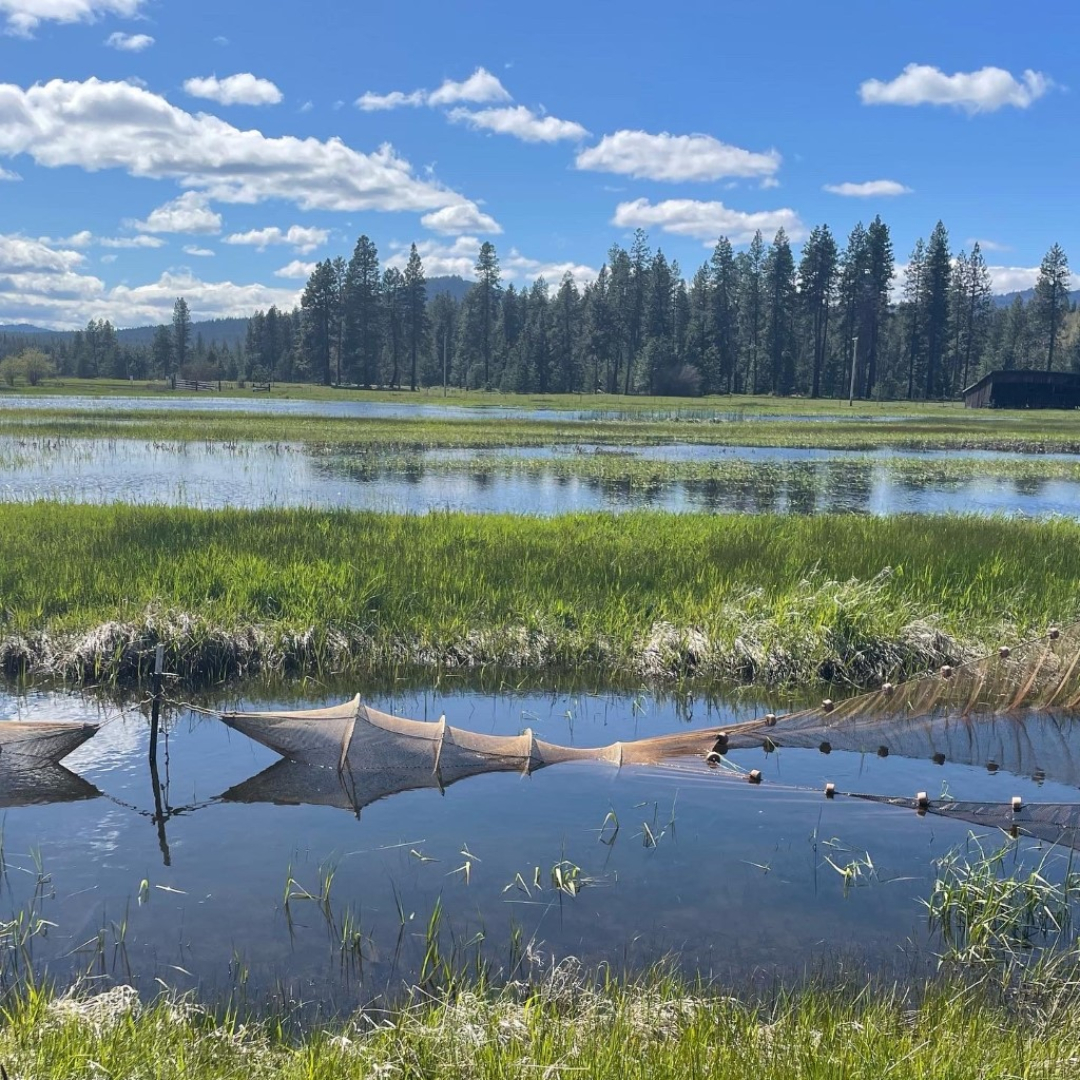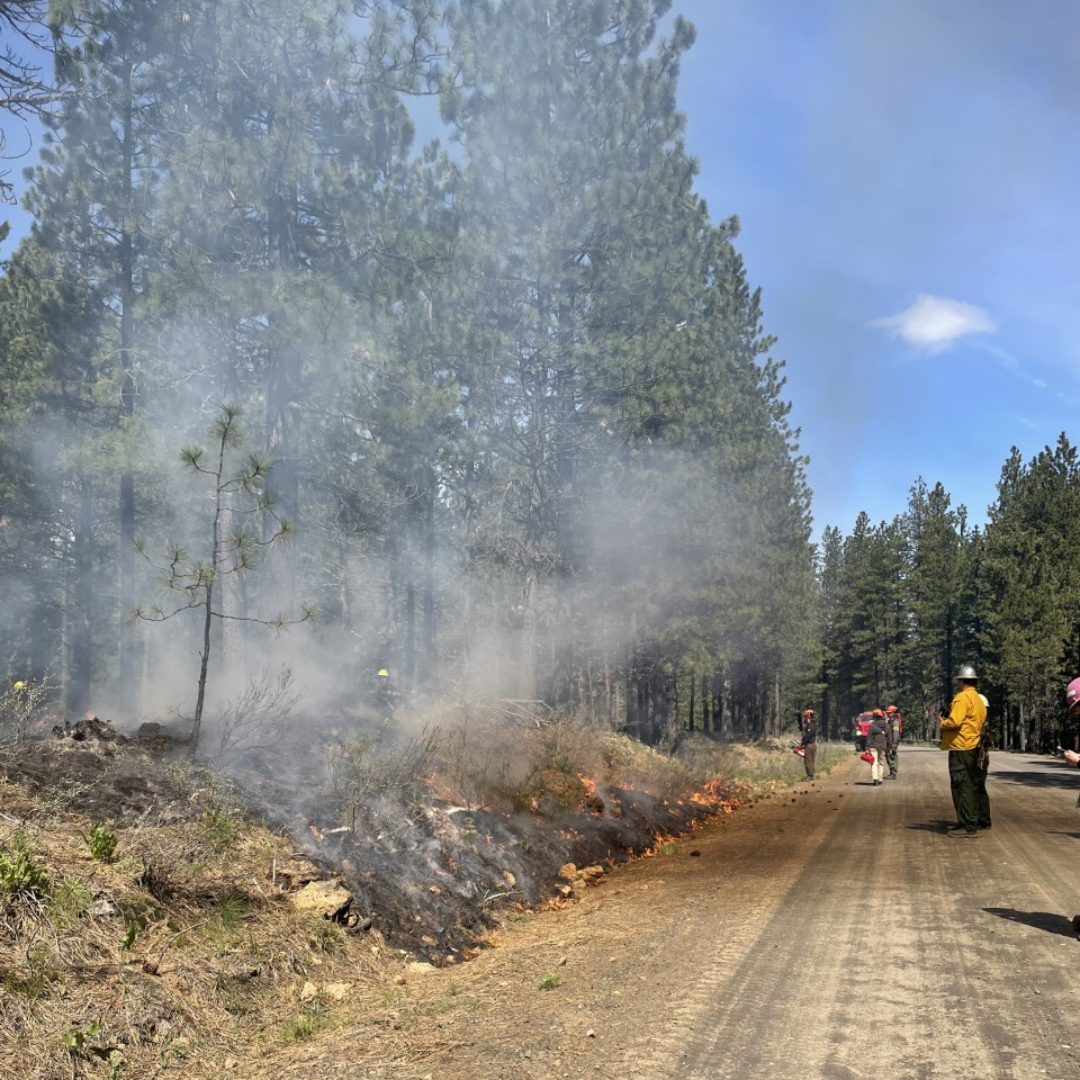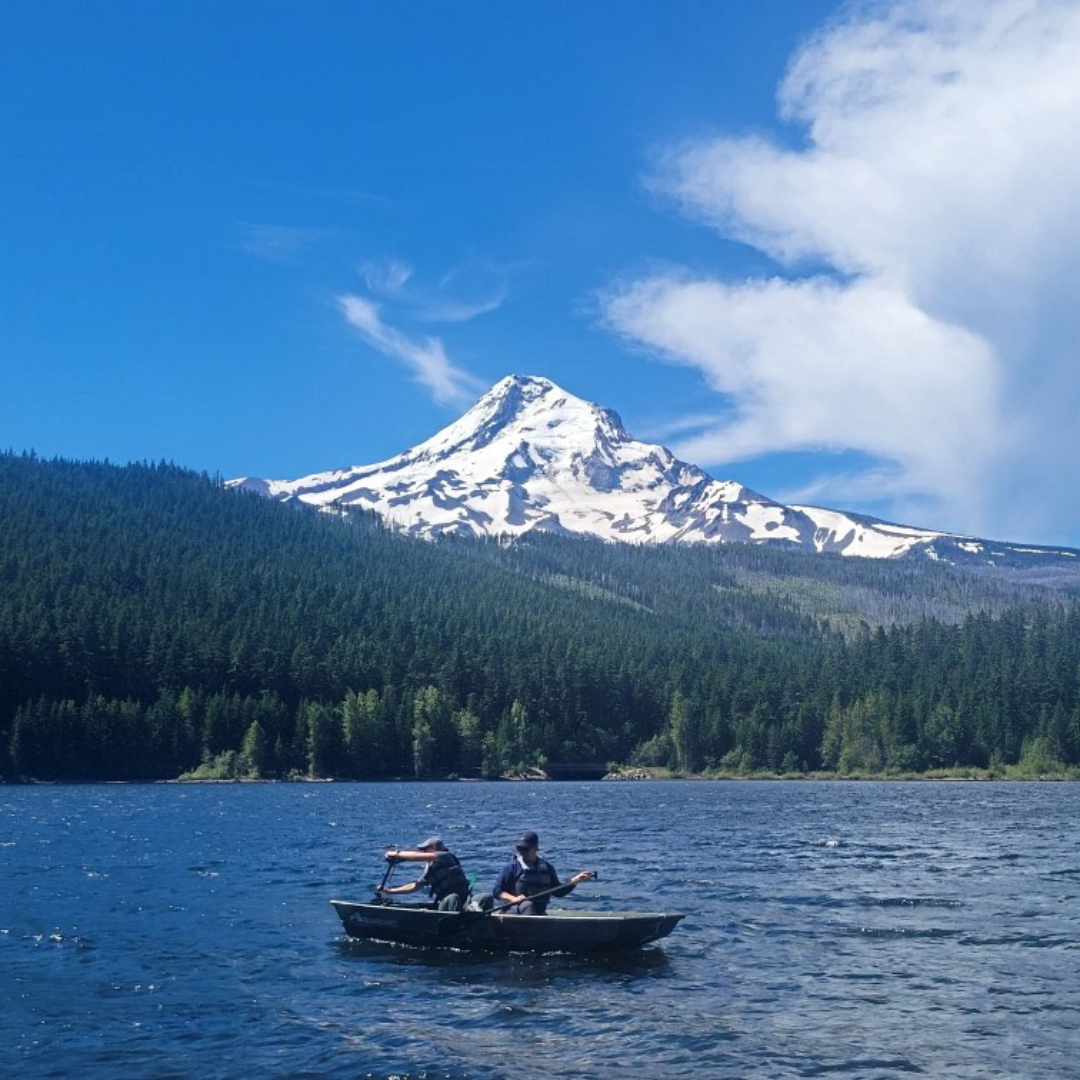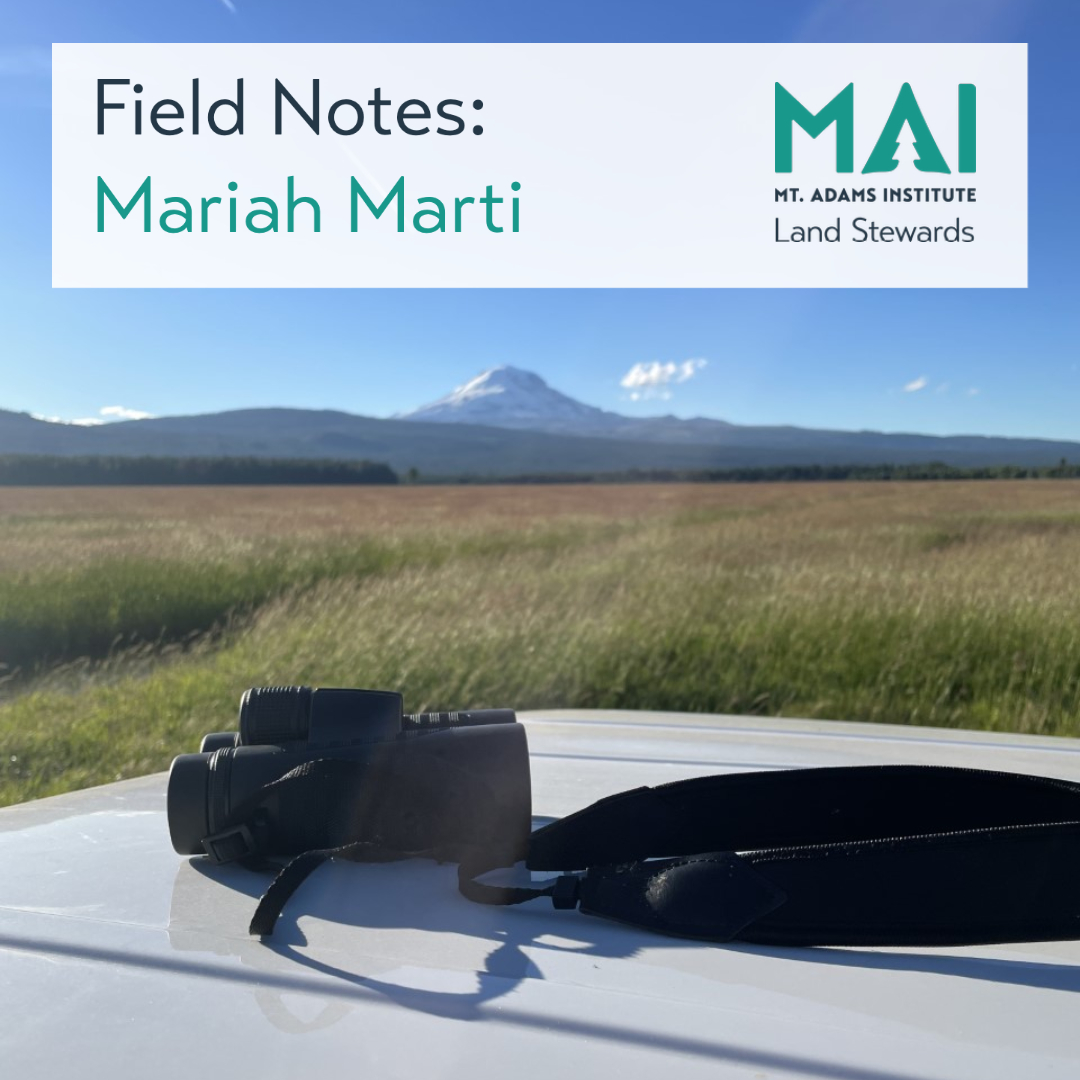Conboy National Wildlife Refuge
As a Public Lands Steward with AmeriCorps, I’m stationed at the Conboy National Wildlife Refuge in Glenwood, Washington. Conboy is a refuge hosting various waterfowl, elk, reptiles, amphibians, and many species of birds. The most notable species are Oregon spotted frogs and other endangered species such as Sandhill Cranes and Mardon Skipper butterflies.
The refuge is managed by the United States Department of Fish and Wildlife and partners with the Mount Adams Resource Stewards which oversee fire projects and wildlife biology conservation. I was sent to this station to help on various projects and work as a Refuge Technician and a USDFW intern. I live in a bunkhouse on the refuge in the city of Glenwood with other Mount Adams employees of similar age and education. My time so far at Conboy has consisted of various projects such as eDNA, BRAT, wildlife surveys, and utilizing ArcGIS programs. I have had the opportunity to advance my skills, beliefs, and mindset through this work. While I have thoroughly enjoyed the first half of my service, I am looking forward to the second half and what I can accomplish!
Work projects
 One of the projects I worked on was eDNA. Environmental DNA was collected from various water bodies on the refuge to look for invasive American Bullfrogs and endangered Oregon Spotted frogs. I used a large backpack containing a small computer system and filter pump to collect water from multiple points of each body of water. 1L of water was collected via suction tube and moved through a sterilized filter. DNA from any organisms in the water would be identified using genetic markers created by the United States Geological Service. This project took me about 2 weeks to complete. The largest challenge was successfully collecting DNA specimens and maintaining a certain level of steerability despite working in difficult elements such as wind, rain, and rough terrain. At the end of the season the specimen results will be available, giving valuable insight into the location of these two competing frogs.
One of the projects I worked on was eDNA. Environmental DNA was collected from various water bodies on the refuge to look for invasive American Bullfrogs and endangered Oregon Spotted frogs. I used a large backpack containing a small computer system and filter pump to collect water from multiple points of each body of water. 1L of water was collected via suction tube and moved through a sterilized filter. DNA from any organisms in the water would be identified using genetic markers created by the United States Geological Service. This project took me about 2 weeks to complete. The largest challenge was successfully collecting DNA specimens and maintaining a certain level of steerability despite working in difficult elements such as wind, rain, and rough terrain. At the end of the season the specimen results will be available, giving valuable insight into the location of these two competing frogs.
The BRAT project is a 5-year project stemming from a conservation grant to protect the endangered Oregon Spotted frog. BRAT stands for Bullfrog Removal Action Team and is comprised of wildlife biologists who perform invasive control of bullfrogs. Since bullfrogs are the main predator of Oregon Spotted frogs, much focus is dedicated to the tracking and removing of bullfrogs. The team uses current published literature to guide their actions, using fyke nets as a form of capture and removal. Frogs are then processed, in which features such as length and weight are tracked, along with geographical location. This data allows the team and refuge biologist to make inferences about where bullfrogs are and where they will be in the future. After frogs are euthanized, they are sent to Portland State University for research into the stomach content of bullfrogs occurs. Members of the BRAT project were also invited by the MARS crew to work on prescribed fires. We were educated on how to safely coordinate and perform prescribed fires to prevent larger, uncontrol wildfire. We were even given the opportunity to perform burn actions under careful supervision.

While on the refuge, I have performed many surveys for animals such as Sandhill Cranes, Mardon Skipper butterflies, Elk, various shorebirds, and other waterfowl. In 2 short months, I have learned how to successfully identify birds based on sound and phenotype. In my time on the refuge, I have seen many birds that I never knew existed before and have gotten the privilege of watching birds grow from chick to young adults. During time off the refuge, I use this identification skill to participate in bird watching/personal enjoyment.
One of the best aspects of being in AmeriCorps as a Public Lands Stewards is the freedom to lead projects of my own desire. After becoming acclimated and familiar with the refuge layout, I decided to start a large mammal tracking project. This project focuses on large mammals in the refuge and their location and behaviors. The project aims to identify differences between species such as elk, deer, cows, coyotes, and mountain lions. Since the latter two animals predate on the others, it is hypothesized that prey animals’ actions and locations will be impacted by the two other large mammal groups. To perform this project, I perform field surveys and take notes on what mammals I find and where they are. I take this information using ArcGIS and Survey123, which were two programs I learned how to use in college. I really enjoy being able to use these skills post-grad and feel confident in my abilities to produce my data to a wide-range audience. I also enjoy being able to create a project that interests me and gain experience in field biology analysis.
Personal Development
 Moving from Portland, Oregon to Conboy National Wildlife Refuge in Washington has changed many aspects of my own mentality. While it is only a few hours drive, the atmosphere is completely different. Many times, while working on the BRAT project, I found myself alone on the refuge, wading through chest-deep water at night. Being surrounded by water vegetation in the dark at first gave me great anxiety. I found that I was jumping at every sound I heard, thinking there was something “going to get me”. I realized this was my flight or fight response from living in a big city and always needing to have my guard up. The first month of my time with the BRAT project, I focused on being logical. I knew there were no alligators in this region, that bears lived father in the forest, that mountain lions were not interested in humans, and coyotes stayed off the refuge. I reminded myself that the only animals I had to worry about were angry ducks, biting water beetles, and poisonous newts. So long as I didn’t lick my hands after touching the newts, I’d be fine. The second month of the BRAT project is when I felt my confidence really rise. I was able to hunt bullfrogs in chest-deep water under the night sky without fear. This allowed me to collect and capture many bullfrogs and enjoy the refuge nightlife, which was extremely different from daytime.
Moving from Portland, Oregon to Conboy National Wildlife Refuge in Washington has changed many aspects of my own mentality. While it is only a few hours drive, the atmosphere is completely different. Many times, while working on the BRAT project, I found myself alone on the refuge, wading through chest-deep water at night. Being surrounded by water vegetation in the dark at first gave me great anxiety. I found that I was jumping at every sound I heard, thinking there was something “going to get me”. I realized this was my flight or fight response from living in a big city and always needing to have my guard up. The first month of my time with the BRAT project, I focused on being logical. I knew there were no alligators in this region, that bears lived father in the forest, that mountain lions were not interested in humans, and coyotes stayed off the refuge. I reminded myself that the only animals I had to worry about were angry ducks, biting water beetles, and poisonous newts. So long as I didn’t lick my hands after touching the newts, I’d be fine. The second month of the BRAT project is when I felt my confidence really rise. I was able to hunt bullfrogs in chest-deep water under the night sky without fear. This allowed me to collect and capture many bullfrogs and enjoy the refuge nightlife, which was extremely different from daytime.
Other aspects of myself that have develop since my time in AmeriCorps induce social skills and self-confidence. As with most conservation efforts, there is a political relationship with the government and local populations that must be handled with respect. The Conboy National Wildlife Refuge is woven into private lands in Glenwood. Cooperation exists between local ranchers and the BRAT project, allowing the removal of invasive species while respecting personal and private lands. I have had the pleasure of working and speaking with private landowners to evaluate common goals and work together to remove invasive species. Likewise, the BRAT project helps to promote community within the town by hosting things such as photo contests, potlucks and cookouts, and other public engagement events.
These types of interactions have helped to boost my self-confidence in working with different groups who have different values. I also have gained confidence in my field of biology work, which is something that I never got a chance to do in college due to COVID shutting down internships. I feel confident that after this experience, I will be able to transfer my new skills and land a job in ecology and/or conservation.
My sense of place within the environment has also increased. Waking up each morning to a sunny view of Mt. Adams has done wonders for my mental health. I find myself literally stopping to smell the flowers and appreciating the refuge for what it is. I’ve been able to go swimming in the river and waterfalls in town, I have kayaked down a stream seeing all the wildlife and vegetation that flourished naturally. I stayed up to watch the planetary alignment with my bunkmates and later went on a hike through waterfalls. Living amongst nature has an impact on one’s mental well-being and helps to recenter personal convictions and beliefs. In today’s world climate, this is an invaluable experience to have.
What’s Ahead
I am looking forward to the next half of the service term, where we will transition into fall. I am extremely interested to see the changes in the behavior of large animals, especially as elk start to become more active. I am also looking forward to continuing to network with other agencies such as the Forest Service and the Geological Service. Some projects I will work on will be eDNA again, an endangered fisheries project on Mt. Hood, and a bear-snare identification project in Gifford Pinchot National Forest. These projects will help me to develop new skills, engage with various groups of people, and will be a chance to see different wildlife species.
As the summer continues, I’m excited to see the work of the BRAT program pay off. I hope to see a sharp decline in American Bullfrog larvae and an increase in Oregon Spotted frog populations. As water drains from the refuge, adaptations will be necessary for my invasive removal skills. I will continue to use ArcGIS to analyze various data sets and will create maps that articulate what the projects have done so far. In this way, I really utilize my bachelor’s degree in a professional manner, allowing me to fine-tune skills for future jobs.
The first half of my service was a huge learning curve and a time of acclimation. I plan to use the next half of my time to grow my skills exponentially and am excited to see what I can accomplish!

